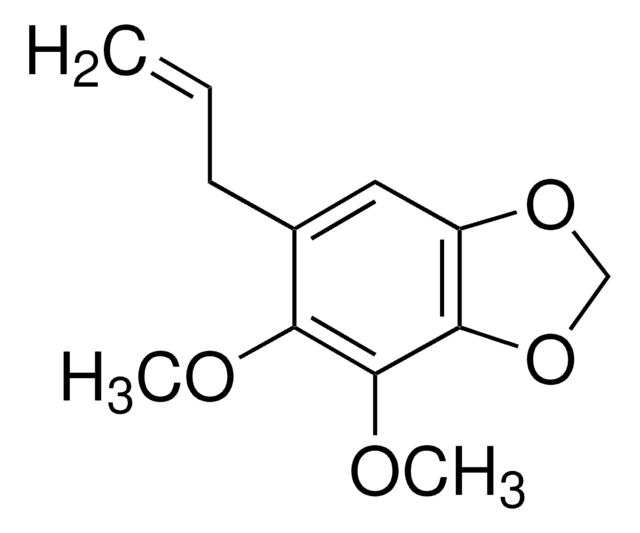PS306
Acide 4-(2,4-dichlorophénoxy)butyrique
analytical standard
Synonyme(s) :
2,4-DB
About This Item
Produits recommandés
Qualité
analytical standard
Conditionnement
pkg of 250 mg
Fabricant/nom de marque
Chem Service, Inc. PS-306
Technique(s)
HPLC: suitable
gas chromatography (GC): suitable
Pf
118-120 °C (lit.)
Application(s)
agriculture
environmental
Format
neat
Chaîne SMILES
OC(=O)CCCOc1ccc(Cl)cc1Cl
InChI
1S/C10H10Cl2O3/c11-7-3-4-9(8(12)6-7)15-5-1-2-10(13)14/h3-4,6H,1-2,5H2,(H,13,14)
Clé InChI
YIVXMZJTEQBPQO-UHFFFAOYSA-N
Vous recherchez des produits similaires ? Visite Guide de comparaison des produits
Application
Mention d'avertissement
Warning
Mentions de danger
Conseils de prudence
Classification des risques
Acute Tox. 4 Oral - Aquatic Chronic 2
Code de la classe de stockage
11 - Combustible Solids
Classe de danger pour l'eau (WGK)
WGK 2
Point d'éclair (°F)
Not applicable
Point d'éclair (°C)
Not applicable
Équipement de protection individuelle
dust mask type N95 (US), Eyeshields, Gloves
Choose from one of the most recent versions:
Certificats d'analyse (COA)
Sorry, we don't have COAs for this product available online at this time.
If you need assistance, please contact Service Clients
Déjà en possession de ce produit ?
Retrouvez la documentation relative aux produits que vous avez récemment achetés dans la Bibliothèque de documents.
Notre équipe de scientifiques dispose d'une expérience dans tous les secteurs de la recherche, notamment en sciences de la vie, science des matériaux, synthèse chimique, chromatographie, analyse et dans de nombreux autres domaines..
Contacter notre Service technique







